Factors That Affect Photosynthesis
This lesson covers:
- Why chlorophyll is required for photosynthesis
- How temperature, carbon dioxide concentration, and light intensity affect the rate of photosynthesis
- How farmers can maximise the rate of photosynthesis
What is the inverse square law?
- The inverse square law states that the intensity of light decreases proportionally to the square of the distance from its source.
- For example, if the distance is doubled, the light intensity decreases to 1/4 of its original value.
- The formula is:
Where:
I = light intensity
d = distance between light source and object
Example calculations
The table below shows how the distance from a lamp affects relative light intensity at distances of 1 m, 2 m, and 3 m.
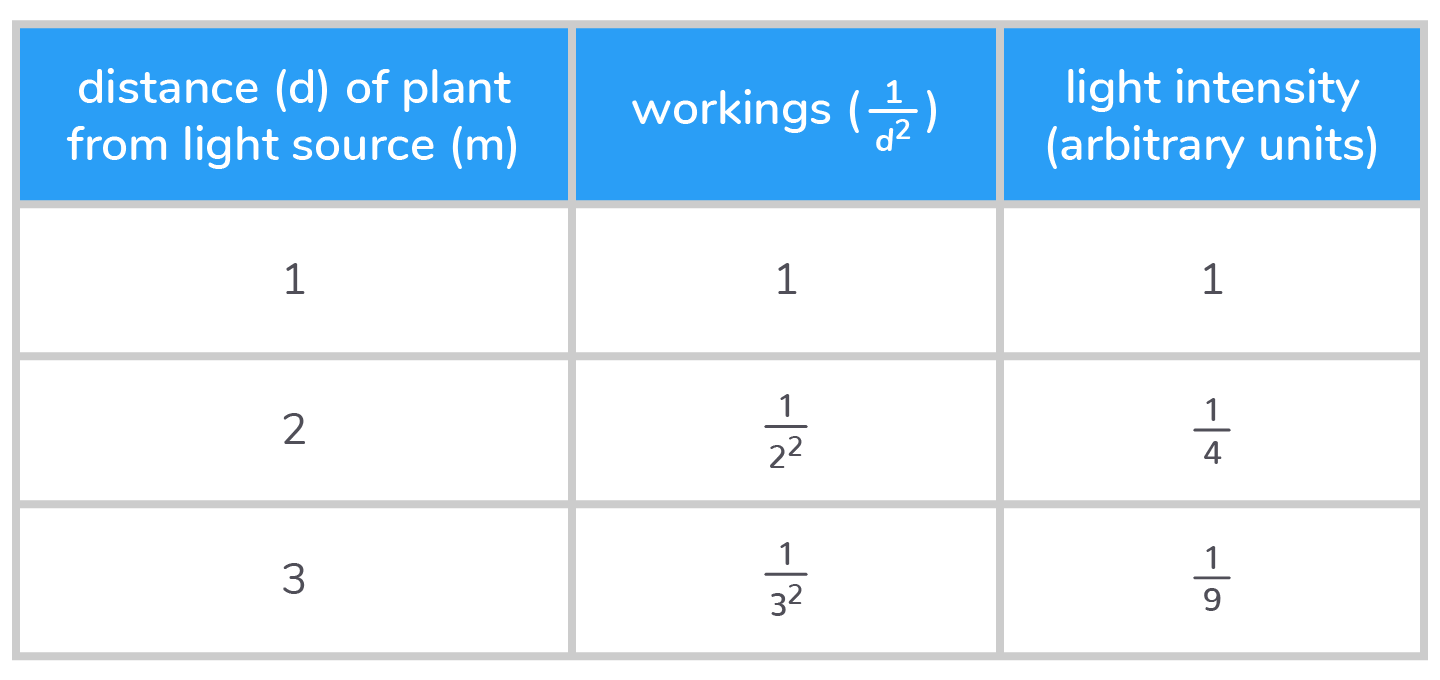
What is the role of chlorophyll?
To attract bees
To absorb light energy for photosynthesis
To provide strength to the leaf
|
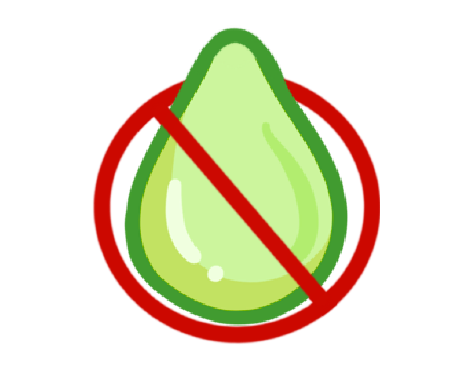
Why may plants produce insufficient chlorophyll?
(Select all that apply)
They don't have enough oxygen
They have a disease like Tobacco Mosaic Virus
They grow too tall
They lack the required nutrients
|
In addition to the amount of chlorophyll that a plant has, there are three environmental factors that affect the rate of photosynthesis. List them below.
|
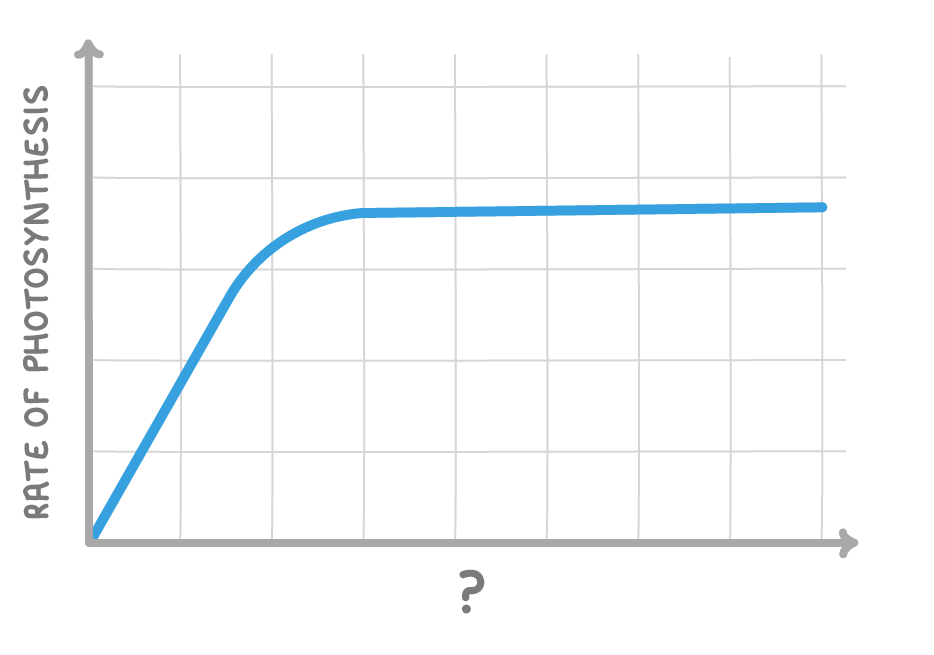
Given the shape of the graph above, which variable(s) could be on the x axis?
(Select all that apply)
Oxygen concentration
Temperature
Light intensity
Carbon dioxide concentration
|

Using what you know about how different factors affect the rate of photosynthesis, which factor would give the above graph?
|
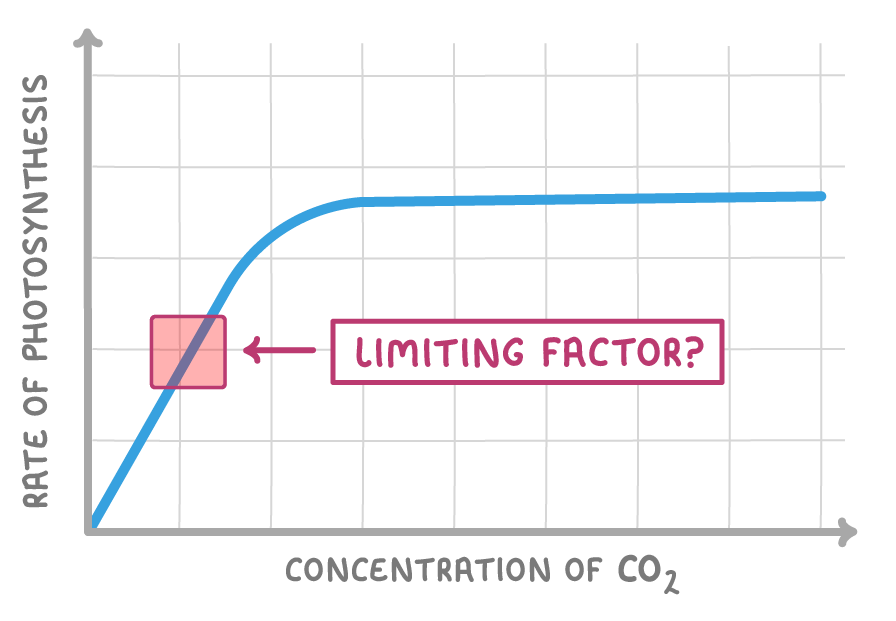
What is limiting the rate of photosynthesis at the point labelled in the graph?
Light intensity
Carbon dioxide concentration
Temperature
|
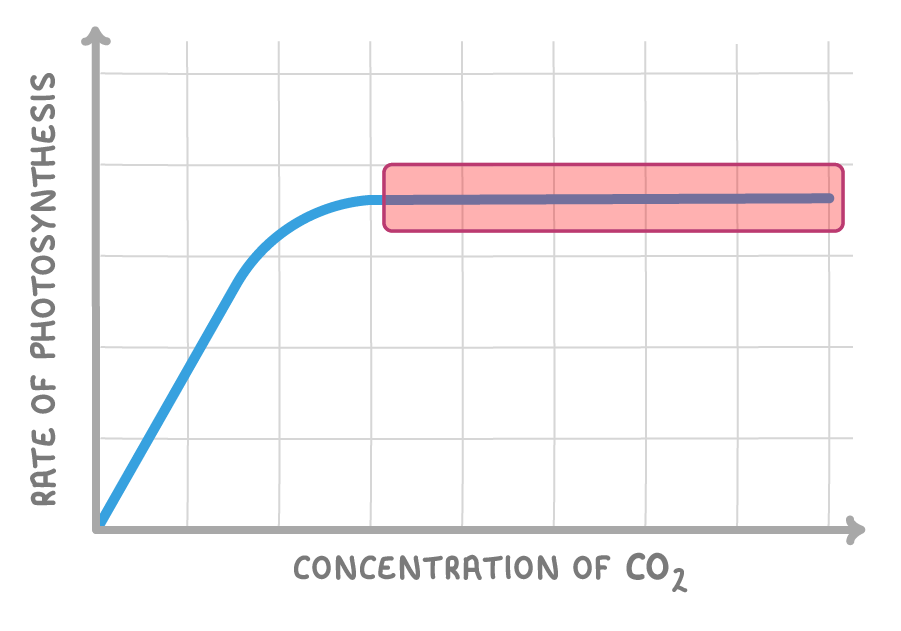
When a graph levels off like this we say that it has:
Stopped
Reached equilibrium
Plateaued
|

At the point indicated on the graph above, what could be limiting the rate of photosynthesis?
(Select all that apply)
Carbon dioxide concentration
Temperature
Light intensity
|
Describe and explain how the rate of photosynthesis varies with temperature.
|
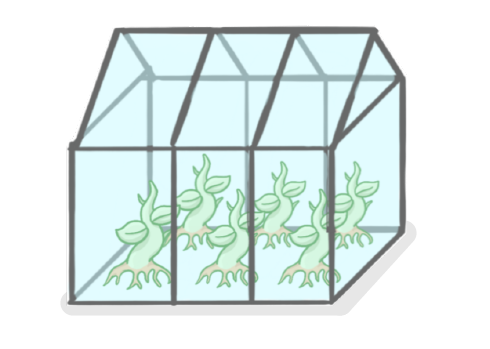
sunlight / lamps / greenhouses / pests / thieves / fertilisers
Farmers in cooler climates often use . These help trap the heat energy from , and so increase the temperature. They also keep out which could otherwise damage the plants.
|
How can farmers ensure that photosynthesis takes place 24 hours a day?
Use greenhouses
Use paraffin heaters
Use artificial lighting
|
Paraffin heaters have two benefits. As the paraffin (a type of fuel) is burned it releases lots of heat, and also lots of:
pesticides
carbon dioxide
oxygen
light
|